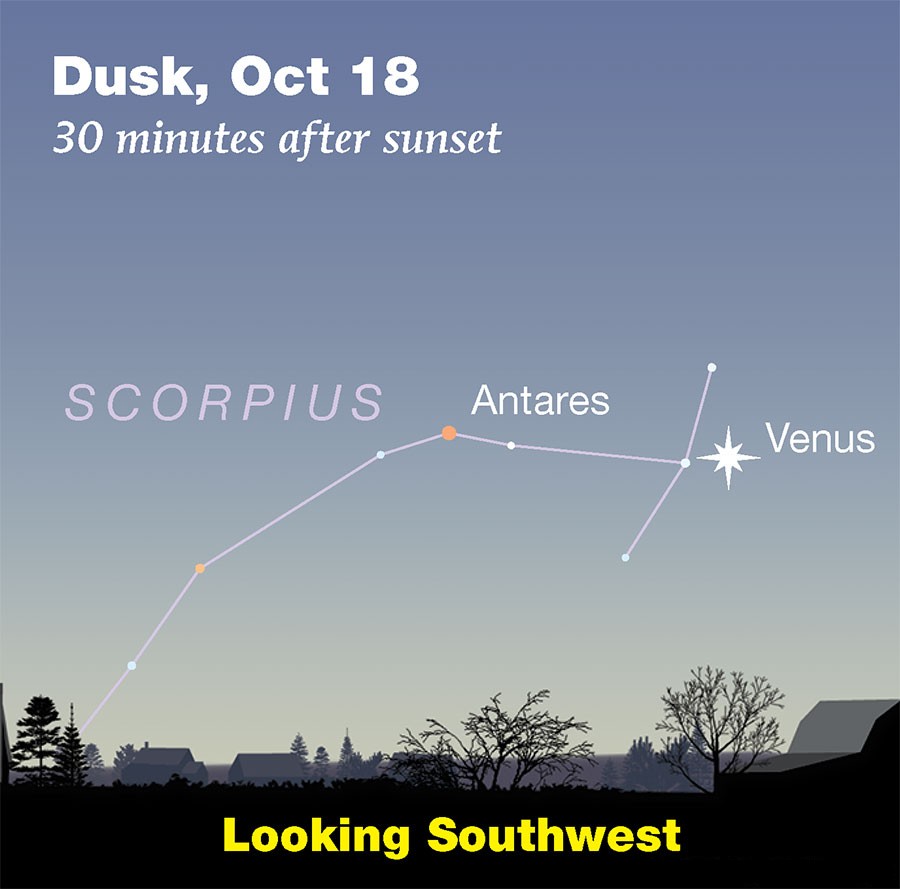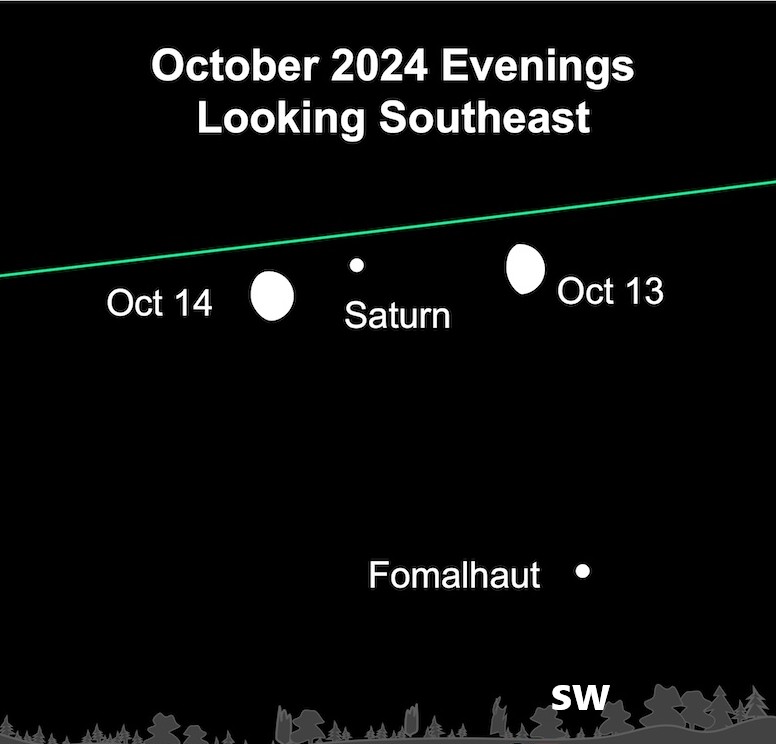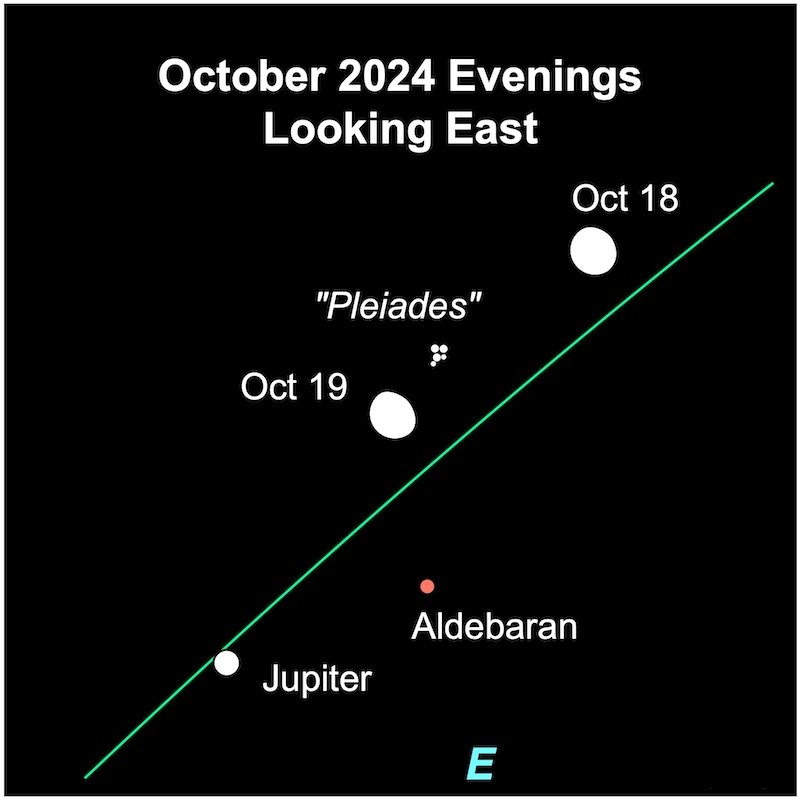
The full moon will be on October 17 in the night sky this week. It is called the hunter’s moon rising at the same time as the sun sets. It is also a supermoon being close to Earth in its monthly orbit causing higher tides and very slightly larger in size. This Hunter’s Moon will be the largest and brightest supermoon in 2024.

Keep an eye out for Venus, which is shining brightly on the southwestern horizon setting around twilight’s end. Venus is now hovering close to the horizon, but it is now climbing higher each night. On Saturday night, the thin crescent moon will be to the lower left of the planet in the twilight.

Saturn is also making its appearance in the southeastern sky after sunset visible for the entire night. It shines in the south around midnight. On October 13 and 14 the moon passes close and slightly above the ringed planet. If you have a small telescope, you might catch a glimpse of its famous rings. Don’t wait too long, though—soon, the rings will be edge-on and might seem to vanish for a bit. Saturn is the brightest object in the area, so it is easy to identify below and right of the Great Square of Pegasus.

Jupiter is rising around 9:00 PM, shining as the fourth brightest object in our sky. Look for it between the horns of Taurus the Bull. During dawn, the planet is overhead toward the south being one of the last night objects to fade during sunrise.

Mars is in the constellation Gemini rising after midnight. During the rest of the year, the red planet will brighten as it comes closer to Earth in its orbit.

A comet called C/2023 A3 is coming from behind the sun and will appear in the evening twilight. It will be one of the brighter comets close to Venus’ brightness. Finding it is not easy in the brighter twilight. It will be on the horizon 30 minutes after sunset; however, it will go higher as the month continues but also gets dimmer. If you can find Venus, the comet will be close. The comet will be at its brightest on October 16th and will then fade. The use of binoculars will help.

The Great Square of Pegasus is now overhead. In Greek mythology, Pegasus is the winged horse, born from Medusa’s blood when she was slain by Perseus. It is associated with heroism and legend and is often depicted flying through the heavens.
While you look at Pegasus, notice a bright star to the south of the constellation called Fomalhaut. Fomalhaut is also called the loneliest star because is the only bright star in a wide stretch of sky. Sometimes call it the Autumn Star. From the Southern Hemisphere, you’ll look higher up to see Fomalhaut in your season of spring. In 2024, Fomalhaut isn’t so solitary, though! A bright planet, Saturn, appears near it in the sky. Of course, Fomalhaut will be the one that’s twinkling since Saturn will shine with a steady light.
Enjoy this cosmic spectacle throughout the week of October 18!
